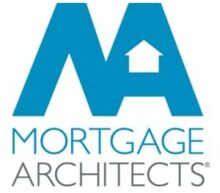Homeowners are a lot more savvy about mortgage rates these days. When it comes to signing up for a mortgage, very few homeowners accept the posted rate. The big banks are notorious for having the highest posted rates. While you can find a five-year fixed rate mortgage for under three percent at secondary lenders or credit unions, the big banks are charging north of four percent on their posted rate. If that’s not highway robbery, I don’t know what is!
The posted rate is a lot like the sticker price on a new car. Very few people accept the sticker price on a new car. It’s up to you to negotiate the price down. When it comes to mortgage, the big banks make you do all the hard work to negotiate down the posted rate. When you accept a mortgage rate lower than the posted it, it’s called the discounted rate.
A lot of homebuyers do their homework, find a lower posted rate and sign up for a mortgage with a big bank by accepted a discounted rate. Homebuyers like the convenience of having all their banking products with one financial institution. Unfortunately, as you’ll soon find out, that convenience can end up costing up a lot.
Qualifying Rate
The posted rate is important because it’s used by the Bank of Canada to calculate the qualifying rate. Like clockwork, each and every Wednesday the Bank of Canada surveys the big six banks, and posts the qualifying rate based on the five-year mortgage posted rate. In layman’s terms, to qualify means to prove you can afford a payment at that higher rate.
As I’ve mentioned before, there is a mortgage mismatch in the market: five-year fixed rate mortgages are pushed by the lenders, yet the average first-time homebuyer only remains in their home for between three and four years on average.
If you go with the odds and decide to sign up for a mortgage term under five years, you qualify based on the posted rate. This means you’re forced to borrow based on the inflated higher monthly mortgage payment, which means you’ll qualify for a lower mortgage amount. For example, if you want a home for $550,000, maybe you might have to settle for a home for $500,000 or less. Your alternative is to accept a five-year fixed mortgage rate, typically at a higher rate.
While the qualifying rate may seem unfair at first glance, it’s not meant to punish homebuyers. It’s means to protect homebuyers and mortgage lenders in case mortgage rates shoot up. A homebuyer who signs up for a five-year fixed rate mortgage is less susceptible to rising mortgage rates upon renewal than one that signs up for a mortgage term of four years or less.
For example, if you signed up for a three year mortgage at 2.49 percent, you could end up renewing at 4.49 percent if government of Canada bond yields shoot up. Not only will less of your money go towards principal and more towards interests, your monthly mortgage payments will be higher. If your household budget is already tight, can you really afford an extra $200 a month or more in mortgage payments?
Mortgage Penalties
As we’ve alluded to, the big banks also use their posted rates to slam you over the head with mortgage penalties. If you have a fixed rate mortgage, you’ll pay the greater of three months’ interest or something called the Interest Rate Differential (IRD). If you break your mortgage early, those three letters could come back to haunt you.
If you’re one of the many homeowners that life happens to: you lose your job, get divorced or accept a job offer in another city, you may need to get out of your mortgage before its term is up. The problem is the big banks will use their posted rate against you when calculating the mortgage penalty. It’s not unheard of for homeowners to pay mortgage penalties of $5,000 or more just to escape from their mortgage.
Hopefully you have a better understanding of the posted rate at the big banks. Next time someone tells you only a fool pays the posted rate, you’ll know two reasons why the posted rate still matters.

